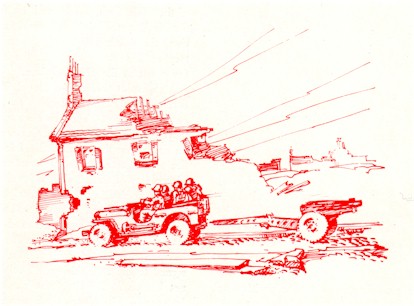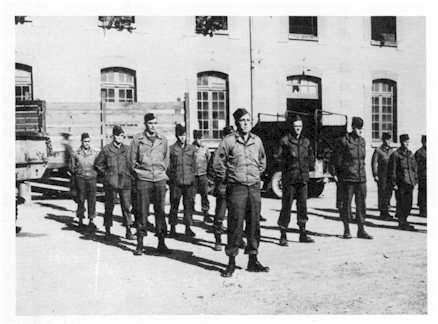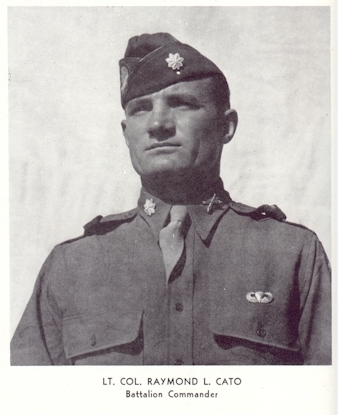 460th
PARACHUTE FIELD ARTILLERY BATTALION
460th
PARACHUTE FIELD ARTILLERY BATTALION
 460th
PARACHUTE FIELD ARTILLERY BATTALION
460th
PARACHUTE FIELD ARTILLERY BATTALION
Former Battalion Commander
LT. COL. JAMES B. ANDERSON -- April 15, 43 -- April 15, 44
THE 460th Parachute field Artillery Battalion was activated April 15, 1943, under the command of Lt. Col. James B. Anderson. During the months of April, May, June, July, and August, the battalion assumed shape at Camp Toccoa, Georgia. Rigorous exercises and never-to-be-forgotten runs up Mt. Currahee in the heat at Toccoa, weeded out those physically unfit and left a unit of young, eager men, rarin' to go. Early in August 1943 the 460th became a part of the 17th Airborne Division at Camp Mackall, North Carolina. Here the battalion had its first artillery training, along with the never-ending physical program. Transferring to Fort Benning, Georgia, the 460th won its boots and wings September 18. Richard Daley of Baker Battery won the distinctive award of a pair of golden wings, his third jump being the 200,000th to be made at Fort Benning.
The battalion returned to Mackall and stayed there from September 20 to January 24, 1944, when the left their warm barracks for maneuvers in Tennessee. Working with its combat team infantry component, the battalion battled the 26th, 78th, and 106th Infantry Divisions. On a sixty-four-mile forced march, the combat team walked through the entire area of the 26th and "annihilated" the "Yankee Division." In Tennessee "General Mud" took a hand in the command and made it necessary for the men to improvise many methods of keeping themselves and their equipment dry -- all of them unsuccessful. An important contributing factor to the victory in the "Battle of Mud" in Tennessee was the ice cream and candy sold by civilians at the end of each problem.
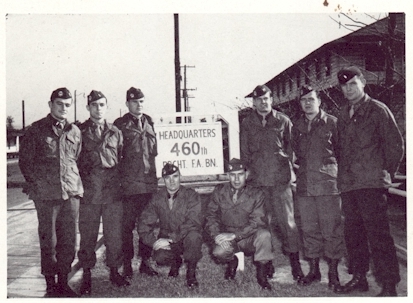 |
460 Prcht. F.A. Officers --
L to R Standing: Lt. Elser Lt. Douglas Capt. Felix Lt. Col. Cato Major Alban Capt. Anderson Capt. Buelow Lt. McClurktn |
Maneuvers came to an end when it was learned that the 517th Combat Team was to leave the 17th Airborne Division. The ride back to Camp Mackall was something out of this world -- each officer and enlisted man had a private bunk and, what was more, breakfast in bed! Back at Mackall, showdown after showdown started rumors 'a-flying of overseas shipment. A new battalion Commander, West Pointer Lt. Col. Raymond L. Cato, arrived, and when packing and waterproofing of equipment began, everyone felt sure he would be in action before long. On the 6th of May, the last short furloughs over, the last equipment packed, the 460th entrained for Camp Patrick Henry, Virginia, where there were last showdowns and "shots" before the battalion sailed on May 17 from Hampton Roads.
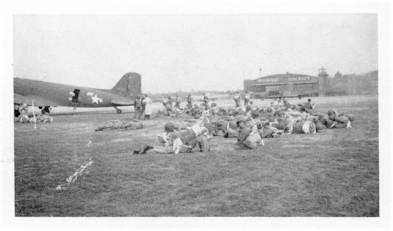
Aboard the U. S. S. "Cristobal" there was a rumor that nine nurses were aboard, but the ladies were never found. To add insult to injury, Wacs could be seen standing at the rail of the nearby "Santa Rosa," which carried the 517th Parachute Infantry. The "Cristobal" docked at Naples, Italy, the 31st of May, and there the men learned that the combat team was scheduled to go into action June 1st on a road leading to Rome. But its supply ship had not arrived, and the battalion bivouacked at "The Crater," just outside of Naples. During a two-week stay, the 'troopers visited Naples, and found it bombed, crumbling, and dirty -- vastly different from American cities.
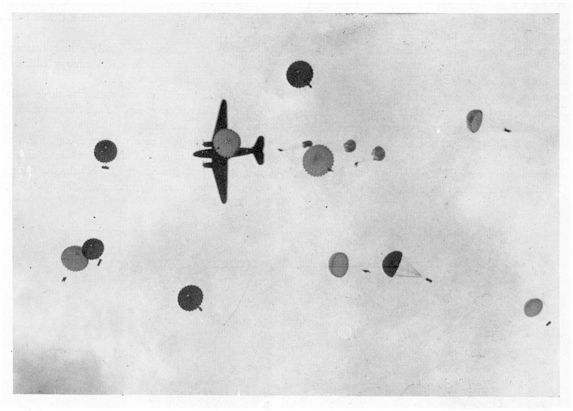
Leaving Naples, the 460th, now attached to the 36th Infantry Division, boarded an LST and headed north for Civitavecchia. It was near Civitavecchia that two S-2 officers, Lt. Biddle of the 460th and Capt. Deering of the 517th, who were scouting the area around Grossetto, found themselves in the undefended village of Montalto di Castro -- a town which they were later credited with capturing! And near this town, on the morning of June 17, exactly one month after sailing from Hampton Roads, the men of the 460th were initiated into combat. During their twelve days of supporting the 36th Infantry, they gave the Germans no rest and had little themselves. They dug in and fired, moved and repeated the process, for seemingly endless days until the enemy had been pushed up the west coast of Italy to Follonica. Then, its mission completed, the combat team was relieved, and the men loaded on trucks for Fraschti. In the few days since Montalto di Castro the 'troopers had changed; the bond of comradeship had grown stronger; confidence had replaced cockiness.

On the way back rumors about the next mission ran wild, but at their new station, high in the mountains overlooking Rome, the men of the 460th forgot about the future. There were passes to Rome -- sight-seeing tours taking in the Coliseum, St. Peter's Cathedral, and the Pantheon. A former Fascist's mansion became an NCO Club. There were coffee and doughnuts at the Red Cross, with real American girls behind the counters. Internationally-minded 'troopers set about strengthening Italiano-Americano relations. A few phrases of Italian, a bit of chocolate, and a fellow had a girl on his arm. Officers found night life and entertainment at Broadway Bill's or the Excelsior Hotel. But life at Fraschti was not easy. Passes came only after days of hard work -- physical training and runs up the mountain sides -- and Mount Currahee in Georgia, was a mere mound compared to Italian mountains. In the afternoons there were road marches and swimming in beautiful Lake Albano. The battalion was shaping up into an outfit of hardened, sun-tanned men.
Then the 460th became a part of the First Airborne Task Force, under the command of Major General Robert T. Fredericks. Remaining non-jumpers were qualified at the Airborne Training Center south of Rome. Rumors of a coming combat jump held high priority in nightly bull-sessions. On the twelfth of August, the battalion, less C Battery, which was to work with the first battalion, 517th Parachute Infantry, proceeded by truck to Montalto Air Field on the outskirts of Montalto di Castro, the town captured a few weeks earlier by Lt. Biddle and Capt. Deering. The 460th spent two days at Monalto. Bundles were loaded on planes, dropping mechanisms were tested, officers were briefed by the Air Corps, and everyone was briefed at sand tables.
On the night of August 14th, forty-five planes, carrying the men of the 460th, took off from Montalto Air Field and headed for the French coast. The battalion had had its initiation into combat in Italy, but this was its first Airborne mission. Men slept as they winged toward France. As land came into view, they woke each other up, and made last-minute checks of equipment. They stood up, bracing themselves as the plane lurched. There was a silent prayer on each man's lips as he shuffled toward the door. Two thousand feet below, obscured by the murky fog was the enemy. As they had many times before, men wondered why they had ever joined such a crazy outfit. Minutes tired by .....
GO!!!
Down, down, down -- suddenly a body-tearing yank, a grateful look at that beautiful canopy billowing overhead, and another prayer ...
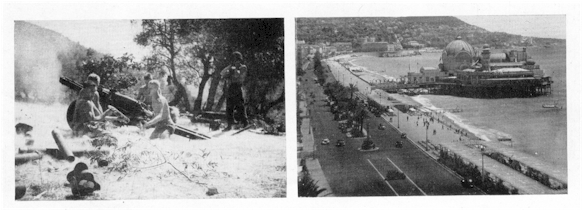
The parachute force was split into three main groups in the landing. One group, "Task Force Frank," jumped prematurely, five minutes after sighting the coast of France. These fifty or sixty men from Able, Baker, and Dog Batteries organized themselves as a small combat team, under Major Edward C. Frank, Jr. Taking advantage of the confused Germans, who thought them a much larger force, ,they neutralized an 88 position and routed what they later learned to have been approximately a battalion of the enemy, as they fought their way toward tile 460th Assembly Area. In the vicinity of Trans-en-Provence, about forty men, assembled under the command of Capt. Louis J. Vogel, were able to walk through a German position undetected, so great was the confusion of the enemy. About three-quarters of the battalion landed on the DZ, but in small, scattered groups. One group under Col. Cato acted as an assault squad to neutralize enemy positions, and all groups had to fight their way to the assembly point, but by six o'clock in the morning approximately one-third of the battalion had assembled, and six howitzers were in their predesignated positions, to form the first battery.
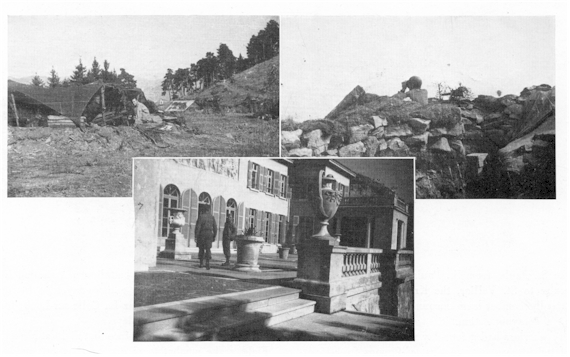
A skeleton Command Post was set up in the Chateau St. Rosalina, outside La Moue, liaison officers and their sections reached their respective infantry battalions and set up radio communication between units of the combat team. The battalion could now fire upon call. By noon, eleven howitzers were in position with Fire Direction Center ready to control their fire. The landing of the 602nd Glider F. A. shortly afterward provided the infantry with two battalions of artillery for support. Order was replacing confusion. By early evening radio contact had been established with the 45th and 36th Infantry Divisions, with Capt. Vogel's force near Trans-en-Provence, with VI Corps, and with 1st Abn Task Force. Firing was continuous during the night and the next day. At six o'clock in the evening of the l5th "Task Force Frank" joined the rest of the battalion. The initial part of the mission was accomplished, and the 460th remained in bivouac near La Motte until August 18th, when the combat team moved out toward Puget.
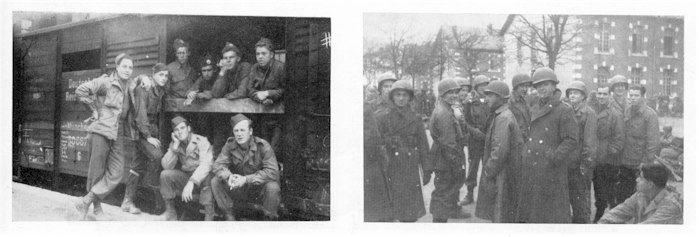
The convoy to Puget that afternoon looked more like a gypsy caravan than anything military -- there was a thirty-passenger bus, several motorcycles, two Buick pick-ups, an Italian truck, and a French truck driven by its owner. Behind these came the hiking artillery-men. At Puget the expected attack by the Germans never materialized, and the battalion continued to move along the French Riviera toward the Italian border. From Puget to St. Pauls, from St. Pauls to St, Cezaire, from St. Cezaire to St. Vallier, the Krauts were in full retreat, and the combat team encountered only small units fighting a delaying action.

Weary warriors had a four-day rest in the taverns and bars of the pleasant city of Grasse; famous for its perfume. Then a thirty-five miles march over hills and mountains brought the battalion to Bouyon, where, in support of the 517th, it blasted the Germans across the Var River. On the other side of the Var, where the battalion fired a few missions, the men saw an example of a German anti-Airborne defense that they, luckily, had not encountered -- a network of poles and low-stretched wires, with artillery shells attached. From September 4 to September 6, from a position near L 'Escarene, the 460th supported the 5l7th as it drove the enemy from the surrounding mountains. Heavy-counter- battery fire to which the battalion was subjected and a direct hit upon an Able Battery position made severe demands upon the coolness and courage of the over-worked medics, and forced the battalion CP to evacuate a railroad station in favor of a nearby tunnel.
On September 6 the Germans withdrew to the fortifications of the Sospel Valley. The battalion CP was moved from the tunnel to the town of Luceram, and the batteries dug in at strategic positions overlooking the valley. For a long time Able Battery, at Piera Cava, and Dog Battery, on a cliff overlooking the valley, were "the front," with no infantry between them and the enemy three-quarters of a mile away. The combat team was in essentially a defensive position, but aggressive infantry patrol activity and incessant, highly accurate shelling and machine-gunning from the 460th made the Sospel Valley and Mt. Agaisien on its opposite side untenable for the enemy. On October 28th the Germans blew three bridges, and withdrew under cover of darkness. Moving forward in support of the 517th, the 460th dug into positions in the vicinity of Mt. Agaisien, overlooking the towns of Briel and Olivetto San Michelle. The battalion established itself as comfortably as possible in the available buildings, and fired with continuous and deadly accuracy on German supply lines until it was relieved by a battalion of Armored Infantry on November 16. Then, a three-day hike brought the men to a bivouac area near La Colle-sur-Loup, 'for their first rest in ninety-seven days.
It had been a long time since that night at Mohtaito Air Field. The combat team had touched off the Invasion Day TNT and had blasted the Germans from the chute-strewn field at La Motte through the Sospel Valley. It had been a lonesome, forgotten war of their own -- that "Champagne Campaign" -- long, hard days of combat, precious passes to beautiful Nice, abruptly-ended romances with Riviera belles, and for some the military cemetery at Draguignan.
After eighteen days of training emphasizing lessons learned in combat, and -- during off-duty hours -- movies, sports, passes to Nice, and walks in the picturesque countryside. At La Colle-sur-Loup, the battalion piled into forty-and-eights at Antibes, and for three days journeyed northward in weather which grew increasingly colder. Upon arrival at its destination -- cold, dreary, wet Soissons -- the 460th was attached to XVIII Airborne Corps.
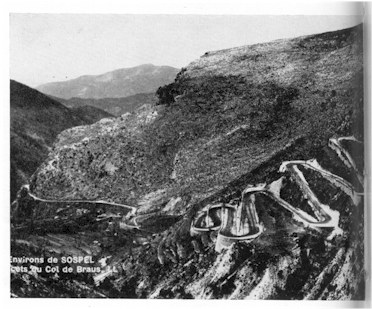
December 16th "it" happened. Under Von Runstedt the Germans broke through in Belgium and threatened to split the American Armies. In response to a call from Corps Headquarters, the 460th entrucked on the 22nd of December for Werbomont, Belgium. There, at Corps Headquarters, Col. Cato and his staff learned that somewhere, not far away, in southern Belgium, the l0lst Airborne Division, the l06th Infantry Division, and many other units had been cut off by the German advance from the rest of the Allied Forces.

Cristobal
The 460th moved to Xhoffraix, Belgium, to supplement the artillery of the 30th Infantry Division. There the men ate their Christmas dinner -- D-rations. There was heavy German air activity, hut worse than the battle was the cold -- the bitter, numbing cold that penetrated layers of clothing and froze feet and hands. Men suffered indescribably during those days of "the Bulge." The day after Christmas, the Combat Team moved to Ferriers to prevent a break-through in that sector; on December 27 to Au Hautre in support of the 7th Armored Division's drive on Manhay. On New Year's Day there was a real turkey dinner, which made up somewhat for the Christmas D-rations. From position to position on the northern flank of the Bulge, in attacks on Manhay, Trois Pont, Bergeval, St. Jacques, Henumont, Coules, Logbeirme, Mont de Fosse, and Petit Thier, in support of the 30th, 75th, 106th, and 1st Infantry Divisions, of the 7th Armored Division, and of the 82nd Airborne Division, the 460th relentlessly pounded enemy-held territory until January 23 when the battalion was relieved for a rest at Stavelot, Belgium.
At Stavelot there were gun drill and classes, six-day furloughs to Paris for a lucky few, movies at night, and one real shower. Then on February 2, the combat team moved to Losheimergraben, Germany, in preparation for an assault on the vaunted Siegfried Line. Here artillery fire was directed at troop movements; the concrete emplacements of the Line were invulnerable to seventy-five millimeter shelling. After nearly three weeks of operations in the deepest mud the 460th had encountered, the combat team was again relieved on February 20 and started moving back to France for a well-earned rest.
Upon arriving at Joigny, France, the 460th was assigned to the 13th Airborne Division. Although it was not known at the time, the combat team had seen its last action. In March there was an alert for the jump across the Rhine; at Vitry, April 3rd, the battalion again made preparations for jumping, but as each day went by, it became evident that it was not needed. On May 8, 1945, the 460th paused for a brief celebration of victory in Europe. However, with the war still on in the Pacific, V-E Day meant little more than transfer to another theater. This was borne out by the announcement at Joigny in July that the 13th Airborne was scheduled for redeployment to the Pacific with a short stopover in the States for furloughs. At sea, two days out of Le Havre, the announcement of V-J Day came over the ship's radio. Men who had been looking forward to a furlough realized that a discharge was not too far in the future. In the States at last on August 20, the men of the 460th were at home shortly afterward.
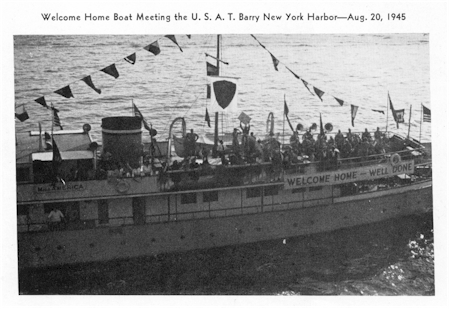
Over a year had passed since they had sailed from Hampton Roads -- months of hard combat in far places. Perhaps some men sweated a little the thought of Pacific occupation with the 13th Airborne, but soon Japan had been peacefully occupied, and for the men of the old 460th duty with the Army was over a few weeks after the furloughs ended. It's another 460th in garrison at Fort Bragg now, a new battalion which will always be proud of the record made by the men of the "Champagne Campaign" and the Battle of the Bulge.
